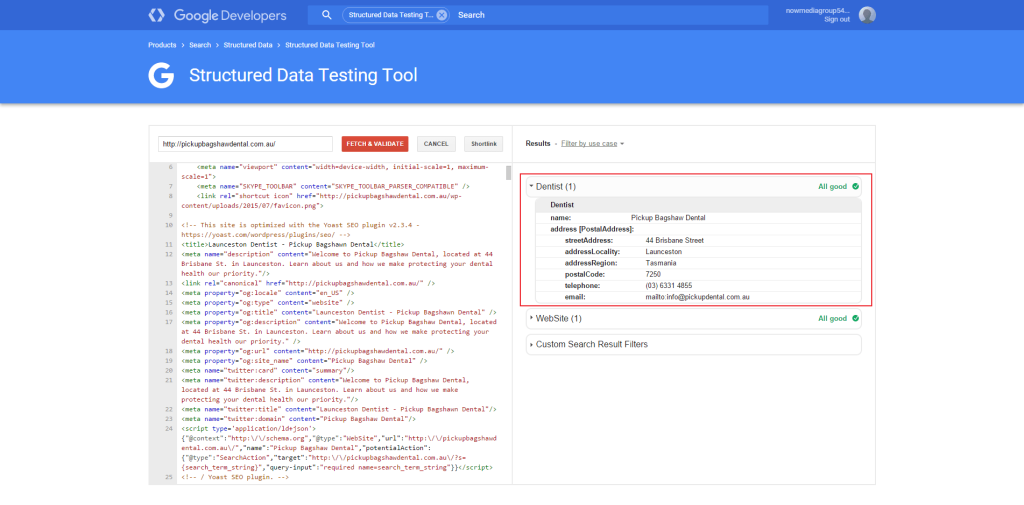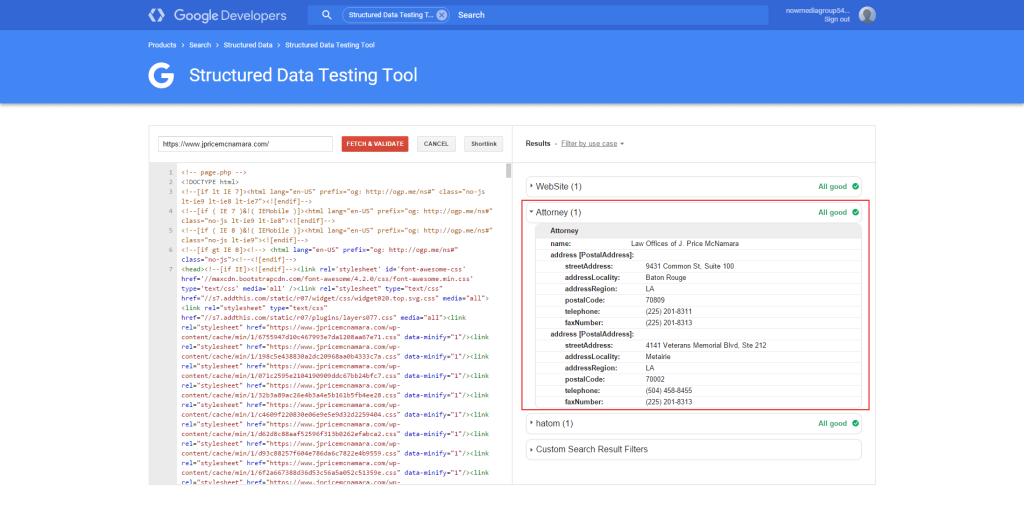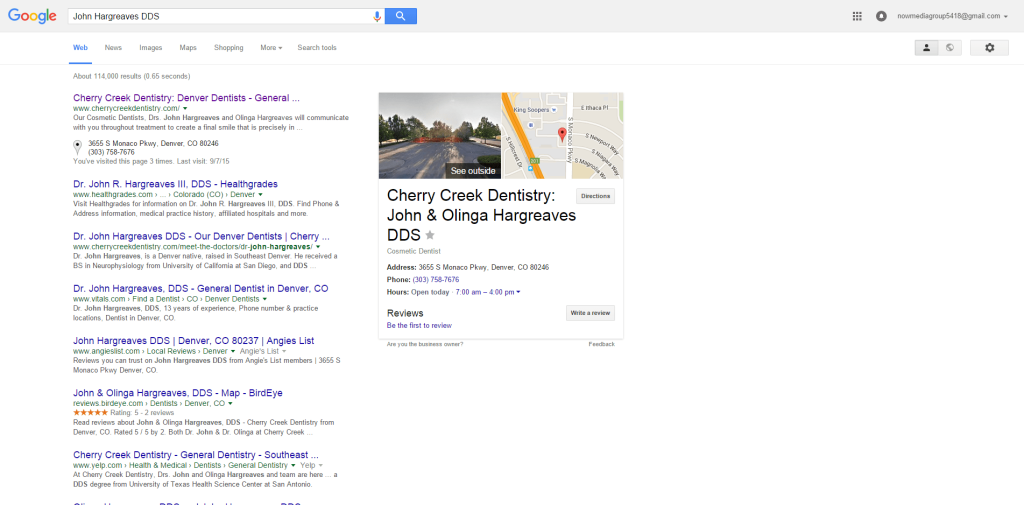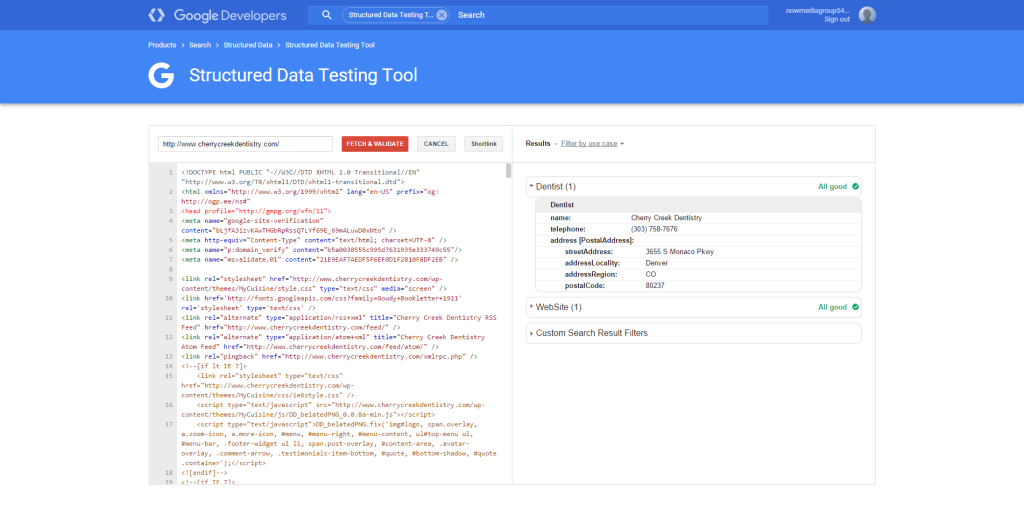Last week, John Mueller — Google’s face to the SEO community — suggested that, moving forward, structured markup “might” become a ranking factor. This announcement has been widely publicized, but it really shouldn’t have come as a big surprise. Structured data’s purpose has always been to make it easier for search engines like Google to understand your website, so whether it’s a direct ranking factor or not, a properly optimized business site should always have structured data.
What is Structured Data and How do I Know if I Have It?
Structured data or markup, oftentimes also referred to as Schema, is special code that goes around specific pieces of information on your website. For example, a local business will have markup around its name, address, phone number, and hours. Structured data even tells search engines what type of local business you are — they have different markup for dentists, attorneys, restaurants, et cetera. What the code does is highlight information for Google and other search engines, so that when they analyze your site it’s easy for them to find important information that they can, in turn, display to your customers.
If you’re a business owner, you should make sure that your website has the right structured markup. You don’t need to know anything about building websites to do so. Google has made available a convenient tool that makes it easy: https://developers.google.com/structured-data/testing-tool/
How to use it:
- When you land on the page, there will be two large rectangles. There will be a light red button that reads “VALIDATE.” To its left, there will be two links: “Fetch URL” and “Examples.”
- Click “Fetch URL.”
- Put in your domain name. If your website is greatdentist.com, you’ll put in www.greatdentist.com.
- Click “Fetch & Validate.”
Google will then do its magic and it will spit out a bunch of stuff in the two big rectangles below. The left-hand rectangle will be a bunch of code. You can ignore it (that’s for your developer to worry about). What matters to you is the right-hand rectangle.
Here’s an example of a dentistry website, using Pickup Bagshaw Dental as our guinea pig, with the right local business structured markup:

You can see that, with the proper markup, Google recognizes the website as being about or belonging to a dentist. Not only that, but it knows the name of the dentistry, its address, its phone number, and even the best email to display to prospective patients looking to contact the practice.
Here is another example, an attorney — J. Price McNamara — with two offices:

Google knows that the website is about an attorney and that the practice has two offices, one in Baton Rouge and one in Metairie. It knows this because the structured data is providing Google with that data (more accurately, it tells Google where to look for that data).
Your website should return, at least, the type of business, the business name, the address, and your phone number. It should do this for all the offices your business owns. And the box where it tells you what type of business it is should have that green little circle with a checkmark and an “All Good” next to it. If it’s not “all good,” email your consultant or whoever does your SEO work and tell them to fix it.
Even If Schema Isn’t a Ranking Factor, It Stills Matters For SEO
I’ll give you the clearest example of why having the right schema matters for SEO. We have a client in Denver, at Cherry Creek Dentistry, named John Hargreaves DDS. Every time a patient searched for the dentist’s name, Google returned a huge box that declared the practice to be closed for business. Obviously, this wasn’t the case. I, unfortunately, don’t have a screenshot of what the Google results looked like before we made the fix, but it essentially looked like this, except with a big red CLOSED tag:

For someone to search for your name, only to get a message that you’re out of business, that’s a huge SEO loss. After all, SEO is all about getting the people who use search engines to find your business.
Why was Google saying that John Hargreaves is closed for business? Because, technically, he was. His practice had moved offices and the old office was then closed, which was reflected in its Google My Business page. The problem was that Google was associating John Hargreaves DDS with the wrong office.
I figured there were two solutions. First, make a new Google My Business for Dr. Hargreaves and have it verified. But, this can take some time and I needed a more immediate fix, because the error was costing our client business. So, what do I have control of now? His structured data! It turns out that his website never had any structured data, so I added it:

You can see that I didn’t really do anything special. I didn’t even include John Hargreaves DDS in the schema (because the actual business name is Cherry Creek Dentistry). Yet, because I made the business information explicit, Google was able to corroborate it with other online references of John Hargreaves DDS, and now Google returns, at least, the right practice. At least, that’s my theory — at any rate, I fixed the schema and about 48 hours later the information on Google was updated.
The point is, you want to make things as easy as possible for Google and other search engines. If they interpret your site incorrectly, that will influence how your website performs on their search results. So why not make some of the most important information explicit to Google with structured data?
Have a Question?
If you have a question or a concern, or you’d just like to comment on this article, please comment below. Or, you can contact us at (858) 333-8950.
